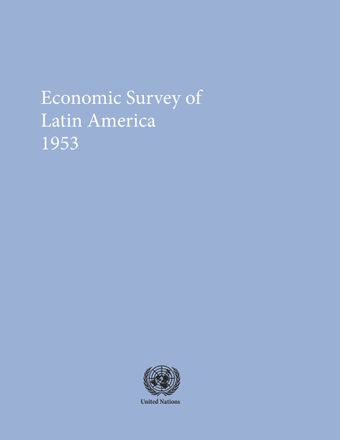Trends of economic growth in Latin America

- Author: Economic Commission for Latin America and the Caribbean
- Main Title: Economic Survey of Latin America 1953 , pp 3-28
- Publication Date: December 1953
- DOI: https://doi.org/10.18356/2d6fe1fc-en
- Language: English
Figures available at the end of 1953 reveal that during the year there was a pause in the intense rate of growth in the gross product which Latin America had experienced since the end of the World War and which had made possible an increase of one-third in the stock of capital and substantial progress in industrialization, towards which both capital and labour resources had been preferentially directed. During the post-war period, a number of fundamental factors contributed to the achievement of one of the highest growth rates in the world. Among such factors was the substantial improvement in the terms of trade, which, besides enabling the gross product to expand faster than output, made it possible for investment to increase without prejudicing consumption. The latter, in turn, was able to rise more rapidly than output. Another factor was the liquidation of foreign exchange reserves accumulated during the war, through which available goods and services advanced proportionately more than the gross product. The aggregate result was a considerable enlargement of productive capacity, stimulated by private investment plans and the economic development programmes of public development institutions founded in the late thirties or early forties. The expansion was further encouraged by the rapid upward movement in consumer demand caused by higher per capita incomes and the increase in wages and salaries per employed person
-
From This Site
/content/books/9789210583565s003-c001dcterms_title,dcterms_subject,pub_keyword-contentType:Journal -contentType:Contributor -contentType:Concept -contentType:Institution105



